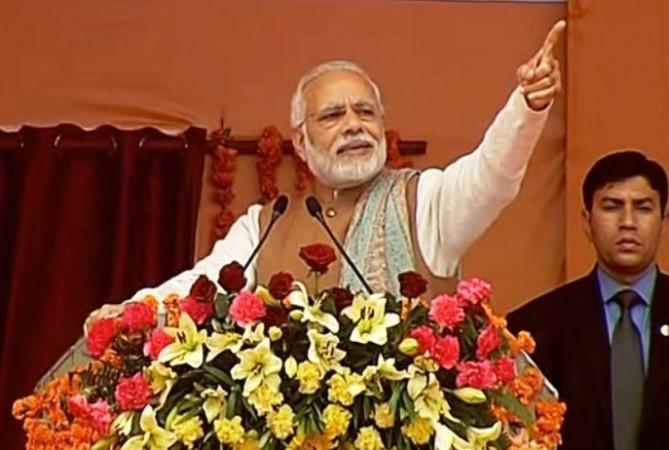
Prime Minister Narendra Modi has two key battles lined up in 2017 among others. The two battles are for the thrones of Lucknow and Gandhinagar. While the prime minister has been elected from the state of Uttar Pradesh (Varanasi), he belongs to Gujarat where he served as the chief minister for over 12 years and the Bharatiya Janata Party (BJP) has a big challenge of sustaining his legacy in that state.
UP 2017 will be the semifinal before the big battle of 2019
Of these two states, the seven-phase polling in UP starting February 11 also has another significance. This election will be a virtual semifinal before the Lok Sabha election of 2019 and 'Brand Modi' has a huge responsibility on his '56-inch chest' to lead his party to produce something similar to the overwhelming performance in UP in the 2014 general election when it won 71 of 80 seats. It will indeed take an unbelievable vote swing against the BJP for it to lose the plot in UP this time compared to 2014 but in politics, impossibility is not a reliable word.
Also Read: BJP will uproot corruption, black money from UP, PM says at Lucknow rally
'Brand Rahul' took a toll in UP in 2012
Modi can take a cue from Rahul Gandhi's story in UP. In the 2009 Lok Sabha election, the latter had led the Congress to produce a decent performance in that state and the party had gone on to lead the second United Progressive Alliance government at the Centre. Expectations were high that the man would see the grand-old party reviving in India's most politically crucial state. But the Congress supporters were left shattered in the 2012 Assembly polls in UP when the party finished fourth under Rahul's leadership. Another young dynasty-produced leader Akhilesh Yadav stole the show to become the state's chief minister.
Demonetisation will keep the BJP concerned about UP
A similar challenge awaits Modi now. Specifically after the demonetisation, the BJP would be following the developments on the ground closely. The saffron party's leadership and general supporters might feel content that the decision to demonetise would deliver a blow to the rival parties' plans of funding their poll propaganda but as per an Indian Express report published in December, BJP parliamentarians from eastern UP, which is economically less developed, have told party president Amit Shah that that the party's electoral prospects could be hit if the situation did not become normal by the middle of January. It can be added here that Modi's constituency also falls in this region.
If the BJP's 2014 performance is converted into Assembly results, it will show that the party has won over 250 of the 403 seats with a vote-share of over 40 per cent in 2014. To miss out a majority (202) from there in the upcoming election will require too much of bad luck but one should also keep in mind how 'Brand Vajpayee' had perished in 2004 despite looking strong and confident ahead of the Lok Sabha election that year, paving the way for a hapless Congress to return from nowhere.
If the trend of the Assembly and Lok Sabha election result in UP is seen, the two regional forces – the ruling Samajwadi Party and Bahujan Samaj Party – have generally done well. While the SP and BSP together won 241 seats in the Assembly poll of 2002 and 54 of 80 seats in the Lok Sabha election of 2004; they won 303 of the Assembly seats in 2007 and 43 of the Lok Sabha seats in 2009. The trend was ruined in 2012-2014 as the combined tally of the two regional parties came down from 304 in the Assembly to just five in the Lok Sabha in 2014, thanks to the BJP-led NDA's Blitzkrieg. It will be interesting to see how the BJP fares this time against the two regional powerhouses one of which, however, is in shambles at the moment and could show the BJP leadership some hope.
BJP lost Delhi & Bihar after winning them handsomely in 2014
The BJP failed to repeat its superlative performance of the 2014 election in the subsequent Assembly polls in Delhi and Bihar in 2015 and those examples could leave its top brass concerned. But whatever be the pros and cons, the saffron party will spare no effort to ensure that its biggest brand, Modi, continues to shine for the big battles that lie ahead. After all, he is the man who led them back to the centre stage in the post-Vajpayee days.

















